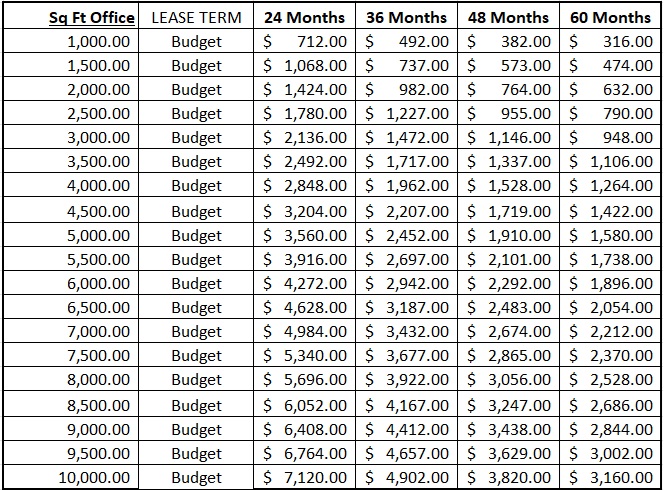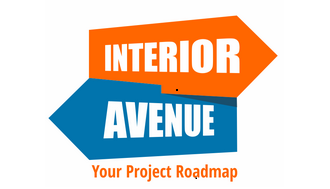Before you Buy Office Furniture Read this Buying Guide
Table of Contents:
1. Introduction
2. What to Look for When Buying Office Furniture
3. Key Questions to Ask Vendors
4. Timeline Considerations
5. Breaking Down the Costs: Furniture and Installation
6. Conclusion and Recommendations

1. Introduction
Congratulations, you are either moving to a new office, leasing an office, or looking for a brand refresh. Purchasing office furniture is a significant decision that can greatly impact the comfort, productivity, and aesthetics of your workplace. Making the right choice requires careful consideration of factors like ergonomics, design, space optimization, and budget. This article aims to guide your business through the intricacies of the procurement process. Don’t stress, it can be overwhelming but it does not have to be.
2. What to Look for When Buying Office Furniture
When purchasing office furniture, it’s crucial to make informed decisions to ensure both comfort and productivity in the workplace. Then there is budget…
Here are key factors to consider:
A. Ergonomics and Comfort Adjustability: Chairs and desks should be adjustable to suit different body types and working styles. Support: Look for features like lumbar support in chairs and wrist supports for keyboards. Chairs from IKEA, AMAZON, Office Depot, Staples, or Wayfair are not commercial grade. You do not need to buy an AERON chair for every employee. You can get quality ergonomic chairs for a reasonable price.
B. Quality and Durability Material: Opt for high-quality materials that can withstand regular use. Make sure your purchase has a great warranty. A good warranty indicates the manufacturer’s confidence in their product and craftsmanship. Commercial-grade warranties usually range from 5-10 years. Make sure you buy a product that has a great warranty. It will cost a tad more but it will last.
C. Functionality and Size Space Efficiency: Furniture should fit comfortably in the available space without making it feel cramped. Storage Solutions: Desks with built-in storage or modular shelving can optimize space. Are the desks adjustable if not are the chairs? If you give employees a smaller space make sure it is flexible. Consider an electric height adjustable desk if the desk is small. Standing once in and while makes employees more productive.

D. Aesthetics Design: Because you are on a budget does not mean you have to buy black chairs and cherry laminate desks. You can have color on a budget. Choose a style that reflects your company’s image and culture. Color Scheme: Consistent colors can enhance the professional look of your office.
E. Flexibility and Modularity Versatility: Modular furniture can be reconfigured as needs change. Multi-purpose: Some furniture serves multiple functions, which can be ideal for smaller offices.
F. Health and Safety Certifications: Look for certifications like BIFMA, indicating compliance with safety standards. Cable Management: Proper cable management options can prevent tripping hazards.
G. Environmental Impact Sustainability: Consider eco-friendly materials and manufacturers with a commitment to sustainability. Recyclability: Furniture that can be recycled at the end of its life cycle reduces environmental impact. You may want to consider renting furniture it is cost-effective and doesn’t go to a landfill after use.

H. Budget Cost-Effectiveness: While quality is important, it’s essential to adhere to your budget. Long-Term Investment: Consider the long-term value rather than just the upfront cost. You can purchase outright if you have the cash flow, rent to own, or try a subscription rental.
I. Technological Compatibility Tech-Friendly: Ensure desks and chairs are compatible with the technology used in your office. Power Access: Desks with built-in power outlets or wireless charging can be extremely useful. Buying office furniture is a significant investment, and considering these factors will help in creating a comfortable, efficient, and aesthetically pleasing workspace. Remember, the right furniture not only supports the well-being of employees but also reflects your company’s values and culture.
3. Key Questions to Ask Vendors
When engaging with office furniture vendors, asking the right questions can ensure you make a well-informed decision that aligns with your business needs and budget.
Here are key questions to consider:
What is the pricing structure, and are there discounts for bulk purchases?
What are the payment terms, and do you offer financing options?
What is the estimated lead time for the order?
Do you provide storage, delivery, and installation services, and if so, what are the costs?
What type of warranty do you offer on your products?
How do you handle repairs or replacements under warranty?
What is your process for handling customer complaints or service issues?
How easily can the furniture be reconfigured for different layouts or expansions?
Do you offer modular, mobile, or multipurpose furniture solutions?
Asking these questions will not only give you a better understanding of the products but also the reliability and credibility of the vendor. It’s crucial to ensure that your investment aligns with your office’s functional needs, aesthetic preferences, and long-term goals.

4. Timeline Considerations:
A. Planning Phase (1-2 weeks): Understand your needs, gather your floor plan, measure spaces, and research potential vendors.
B. Selection and Purchase (1-4 weeks): After shortlisting vendors, visit showrooms or request samples. Once a decision is made, place the order.
C. Delivery and Installation (2-8 weeks): Depending on the vendor and customization requirements, this period can vary. Factor in potential delays.
D. Buffer Period (1-2 weeks): Allow for unforeseen challenges like shipping delays or installation hiccups.
E. Breaking Down the Costs: Furniture
• Desks: $400 – $2000+ depending on the material, design, and brand.
• Chairs: $200 – $1000+ ranging from basic to high-end ergonomic designs.
• Storage Solutions: $250 – $2000+ depending on size, material, and functionality.
• Conference Tables: $2,000 – $10,000+ based on size, material, and features
F. Installation Costs:
• Basic Assembly: $50 – $100 per piece.
• Complex: $100 – $500+ for items requiring electrical setup, wall-mounting, or specialized configuration.
• Bulk Discounts: Some vendors offer discounted installation for large orders.
• Delivery: Some vendors provide free delivery, while others may charge based on distance or order size.
• Maintenance: Protect your investment with periodic maintenance. Consider extended warranties or service packages.

5. Conclusion and Recommendations
When investing in office furniture, focus on long-term value rather than short-term savings. Prioritize ergonomics and durability to ensure a comfortable and productive workspace. By thoroughly vetting vendors and understanding the full spectrum of costs involved, businesses can make informed decisions that serve them well for years to come.
For those looking for swift solutions without compromising on quality or budget, consider partnering with Interior Avenue. Renowned for their fast service and affordable options, they provide an array of office furniture tailored to modern business needs. We hope this guide offers clarity and guidance in your office furniture procurement process. Making the right choice can lead to a vibrant, efficient, and comfortable workspace, promoting well-being and productivity among employees.
We have 3 options to buy:
Purchase upfront– Pay upfront for your office furniture to be delivered and installed.
Rent to own– We help you break up the payments to help with cash flow. This service includes delivery and installation.
Subscription rental– Monthly payments that include delivery and installation and when your subscription is over we will take back the furniture and move it out of your office space for free.

Office furniture subscription monthly model budget
WE WOULD LOVE THE OPPORTUNITY TO HELP YOUR BUSINESS.






Leave a reply